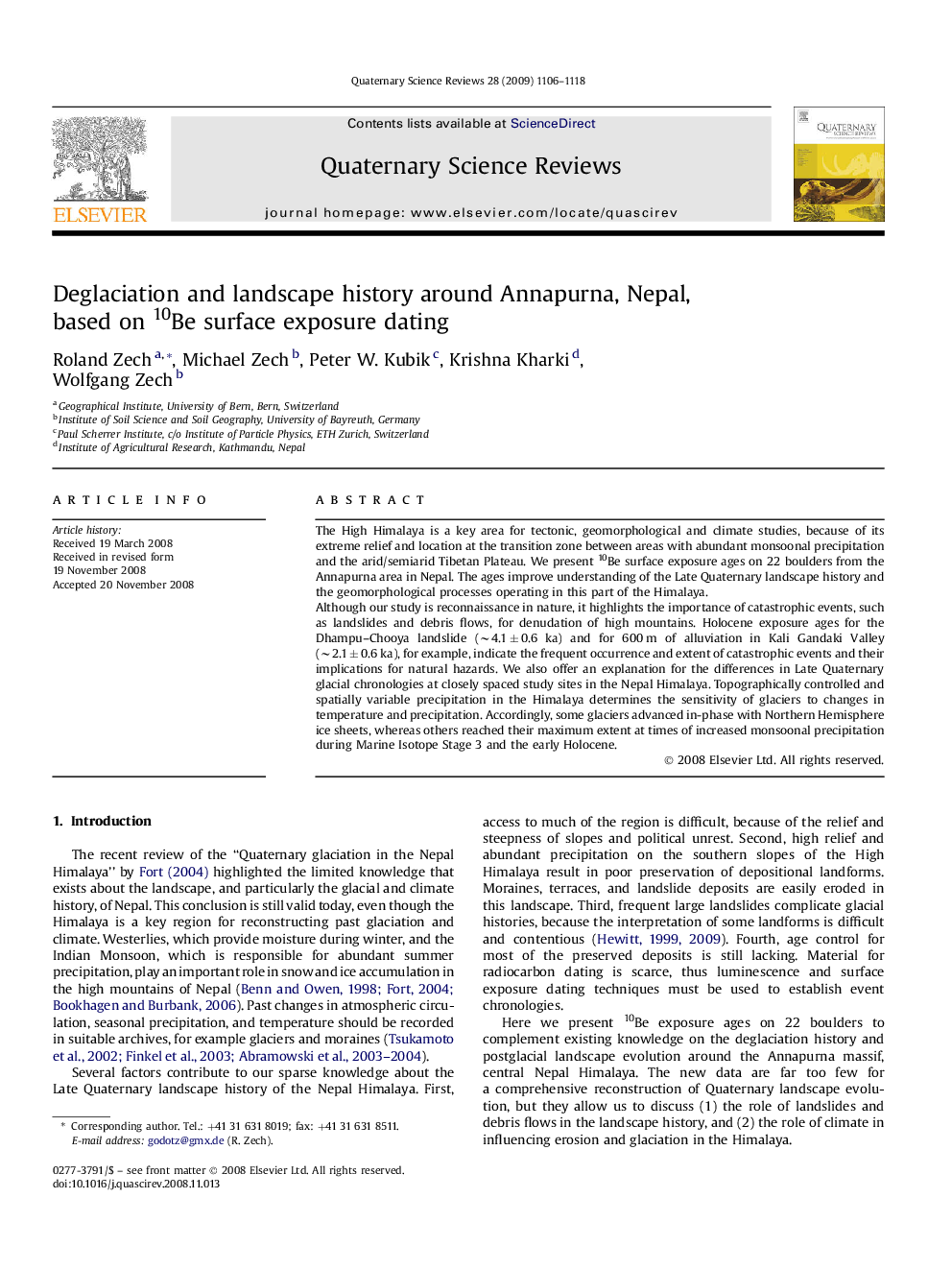| کد مقاله | کد نشریه | سال انتشار | مقاله انگلیسی | نسخه تمام متن |
|---|---|---|---|---|
| 4736095 | 1640940 | 2009 | 13 صفحه PDF | دانلود رایگان |

The High Himalaya is a key area for tectonic, geomorphological and climate studies, because of its extreme relief and location at the transition zone between areas with abundant monsoonal precipitation and the arid/semiarid Tibetan Plateau. We present 10Be surface exposure ages on 22 boulders from the Annapurna area in Nepal. The ages improve understanding of the Late Quaternary landscape history and the geomorphological processes operating in this part of the Himalaya.Although our study is reconnaissance in nature, it highlights the importance of catastrophic events, such as landslides and debris flows, for denudation of high mountains. Holocene exposure ages for the Dhampu–Chooya landslide (∼4.1 ± 0.6 ka) and for 600 m of alluviation in Kali Gandaki Valley (∼2.1 ± 0.6 ka), for example, indicate the frequent occurrence and extent of catastrophic events and their implications for natural hazards. We also offer an explanation for the differences in Late Quaternary glacial chronologies at closely spaced study sites in the Nepal Himalaya. Topographically controlled and spatially variable precipitation in the Himalaya determines the sensitivity of glaciers to changes in temperature and precipitation. Accordingly, some glaciers advanced in-phase with Northern Hemisphere ice sheets, whereas others reached their maximum extent at times of increased monsoonal precipitation during Marine Isotope Stage 3 and the early Holocene.
Journal: Quaternary Science Reviews - Volume 28, Issues 11–12, June 2009, Pages 1106–1118